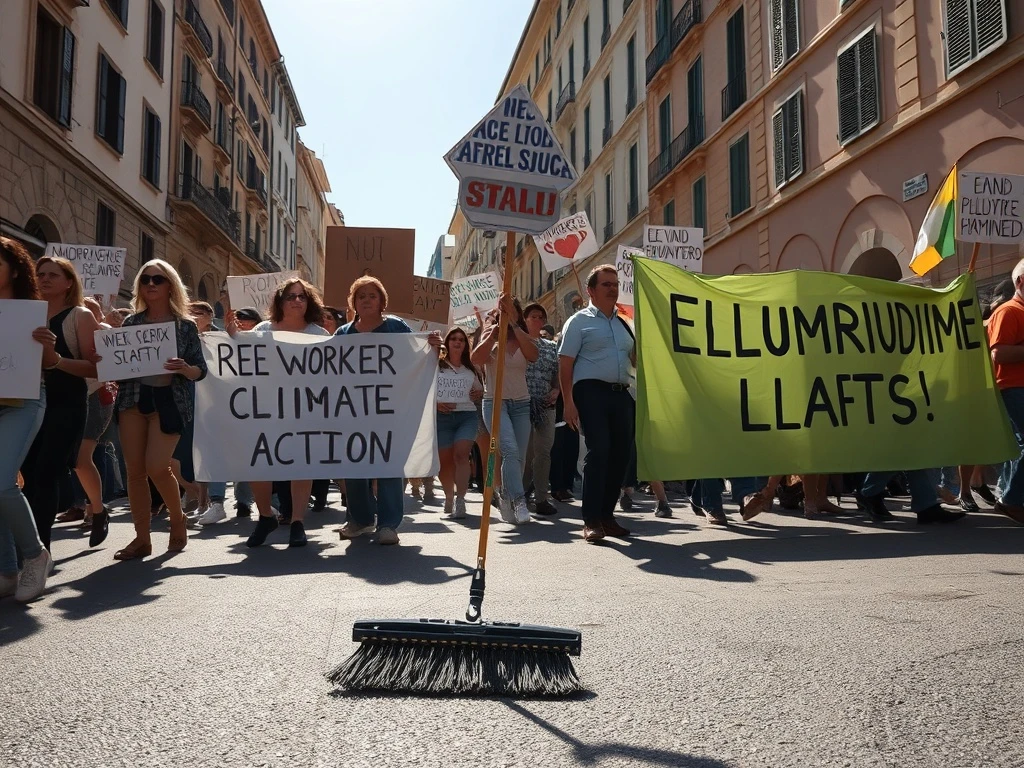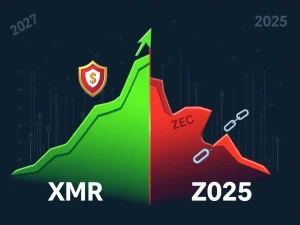Urgent Heatstroke Death Crisis: Barcelona Incident Ignites Southern Europe Labor Protests

While the cryptocurrency market often focuses on digital innovations and decentralized finance, the real world continues to grapple with pressing societal challenges. A recent tragedy in Southern Europe serves as a stark reminder of how global issues, like climate change, directly impact human lives and labor conditions. This incident, centered around a devastating heatstroke death, has sparked widespread unrest, underscoring vulnerabilities that can ripple through economies and affect overall stability, even indirectly influencing broader market sentiments.
The Tragic Heatstroke Death That Sparked Outcry
In June 2025, a severe heatwave swept across Southern Europe, claiming the life of Montse Aguilar, a 51-year-old Barcelona street sweeper. Her death from heatstroke, occurring amidst record temperatures, became a powerful symbol of the deadly risks faced by outdoor workers. This tragic event immediately ignited a firestorm of anger and grief, particularly among her colleagues and labor unions. Over a dozen city cleaners reported heat-related illnesses following Aguilar’s passing, highlighting a systemic issue that had long been overlooked or inadequately addressed. Her heatstroke death was not an isolated incident but a grim indicator of a growing crisis.
Southern Europe Erupts: The Power of Labor Protests
Aguilar’s death catalyzed widespread labor protests across Southern Europe. In Barcelona, workers marched with banners, demanding recognition of extreme heat as a form of workplace violence. These protests weren’t just about one life lost; they were a collective cry for fundamental changes in labor protections. While Barcelona City Hall responded by introducing new safety measures—including breathable uniforms, hourly water breaks at 34°C (93°F), and work suspensions above 40°C (104°F)—workers claim inconsistent enforcement. Supervisors allegedly penalize employees for taking breaks, and many report having to buy their own water. Antonia Rodríguez, a 56-year-old cleaner, voiced the growing frustration: “each year the heat is worse.” The company employing Aguilar, FCC Medio Ambiente, declined to comment on specific grievances but previously stated its commitment to heat-safety training. These labor protests continue to push for accountability and genuine change.
Understanding the Climate Change Impact on Workers
The incident in Barcelona is part of a broader, alarming trend linked directly to climate change. Spain’s Carlos III Health Institute reported over 1,000 excess deaths in June and July due to extreme heat, underscoring the severe public health crisis exacerbated by rising temperatures. Diana Gómez, head of the institute’s mortality observatory, emphasized this connection, highlighting how hotter summers are becoming a direct threat to life. The International Labor Organization (ILO) describes heat stress as an “invisible killer,” urging stricter protections for workers, particularly in regions like Europe and Central Asia, where heat exposure has surged this century. The profound climate change impact is no longer a distant threat but a present danger, particularly for those whose livelihoods depend on outdoor work.
Demanding Better Worker Safety: Challenges and Solutions
The core of the unrest revolves around ensuring adequate worker safety in increasingly harsh conditions. While some regulations exist, their implementation and enforcement remain critical challenges. For instance, Greece mandates breaks for outdoor workers like construction and food delivery staff, but unions advocate for year-round heat-safety monitoring. Athens grill cook Thomas Siamandas, working in 38°C (100.4°F), detailed daily precautions like air-conditioned breaks and hydration, yet acknowledged the physical toll. In Rome, tour guides at the sunbaked Roman Forum face similar hazards. Federagit, the national tour guide federation, petitioned for earlier opening hours, but only a 30-minute adjustment and late-night visits were proposed. These examples highlight a disconnect between policy and practical protection. Effective worker safety requires not just rules, but consistent, compassionate enforcement and a proactive approach to evolving climate realities.
Why Southern Europe is on the Frontlines of Climate Justice
The crisis underscores systemic vulnerabilities in labor policies as Southern Europe confronts increasingly harsh summers. The region serves as a stark example of the human cost of unregulated heat exposure. Unions argue that economic growth and climate adaptation must be balanced with the fundamental right to worker safety, especially for those in essential yet hazardous roles. While cities implement emergency measures, the lack of consistent enforcement and long-term policy shifts remains a critical barrier. Aguilar’s death has become a focal point for broader debates about climate justice, emphasizing that the burden of climate change disproportionately affects vulnerable populations and essential workers. Southern Europe is not just experiencing a heatwave; it is experiencing a pivotal moment in the global fight for climate-resilient labor practices.
Conclusion
The tragic death of Montse Aguilar in Barcelona has illuminated a critical intersection of climate change, labor rights, and public health. Her story, and the subsequent wave of labor protests across Southern Europe, serves as an urgent call to action. As temperatures continue to rise, protecting outdoor workers is not just a moral imperative but an economic necessity. The demand for consistent enforcement of safety measures, coupled with long-term policy adjustments, is paramount. This crisis highlights the need for governments, corporations, and international organizations to collaborate on comprehensive strategies that prioritize human well-being over short-term gains, ensuring that no worker has to risk their life simply by doing their job in the face of escalating extreme heat.
Frequently Asked Questions (FAQs)
What caused the Barcelona street sweeper’s death?
Montse Aguilar, a 51-year-old Barcelona street sweeper, died from heatstroke in June 2025 during a severe heatwave, while performing her duties.
What immediate actions did Barcelona City Hall take?
Barcelona City Hall imposed new safety measures, including breathable uniforms, hourly water breaks at 34°C (93°F), and work suspensions above 40°C (104°F) for city cleaners.
Why are workers protesting these new measures?
Workers claim that the new policies are inconsistently enforced, with supervisors allegedly penalizing employees for taking breaks and many being forced to purchase their own water, leading to continued frustration and protests.
How is climate change linked to this incident?
Experts, including Spain’s Carlos III Health Institute, link the rising number of heat-related deaths and illnesses directly to climate change, noting that increasingly harsh summers exacerbate public health crises and workplace hazards.
What is the International Labor Organization’s (ILO) stance on heat stress?
The ILO describes heat stress as an “invisible killer” and is pushing for coordinated international action and stricter protections for workers in regions experiencing increased heat exposure, such as Europe and Central Asia.
What broader implications does this crisis have for Southern Europe?
The crisis highlights systemic vulnerabilities in labor policies across Southern Europe, underscoring the urgent need to balance economic growth and climate adaptation with fundamental worker safety, particularly for those in essential outdoor roles.









